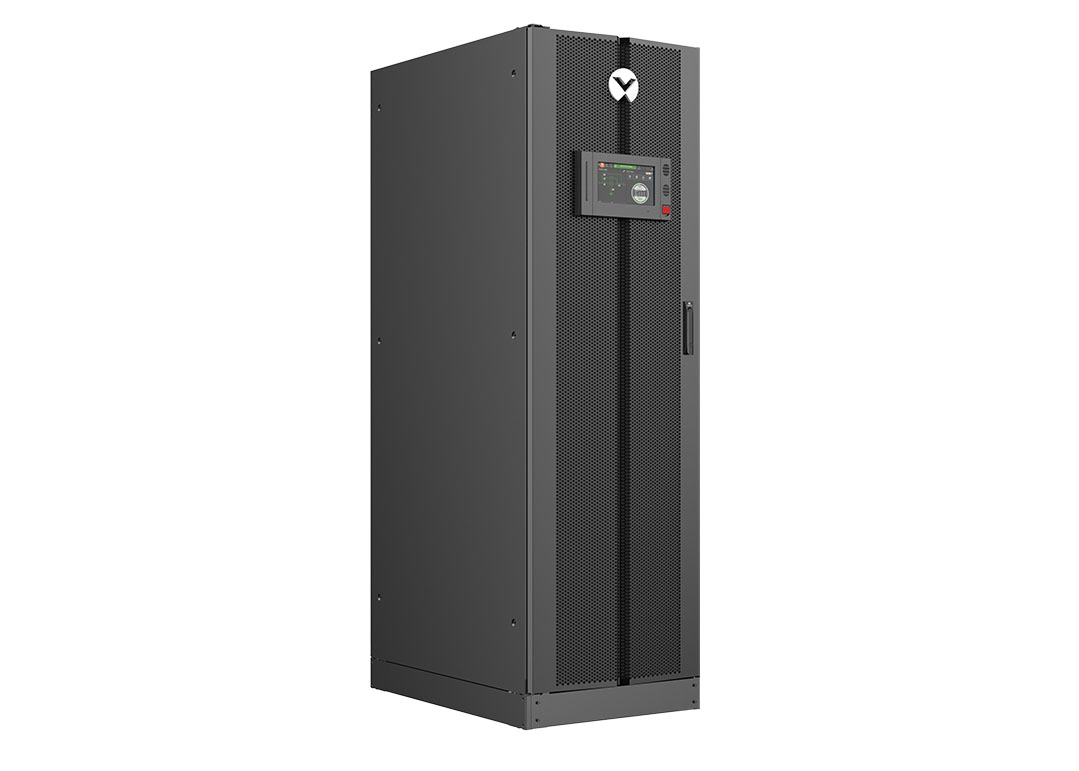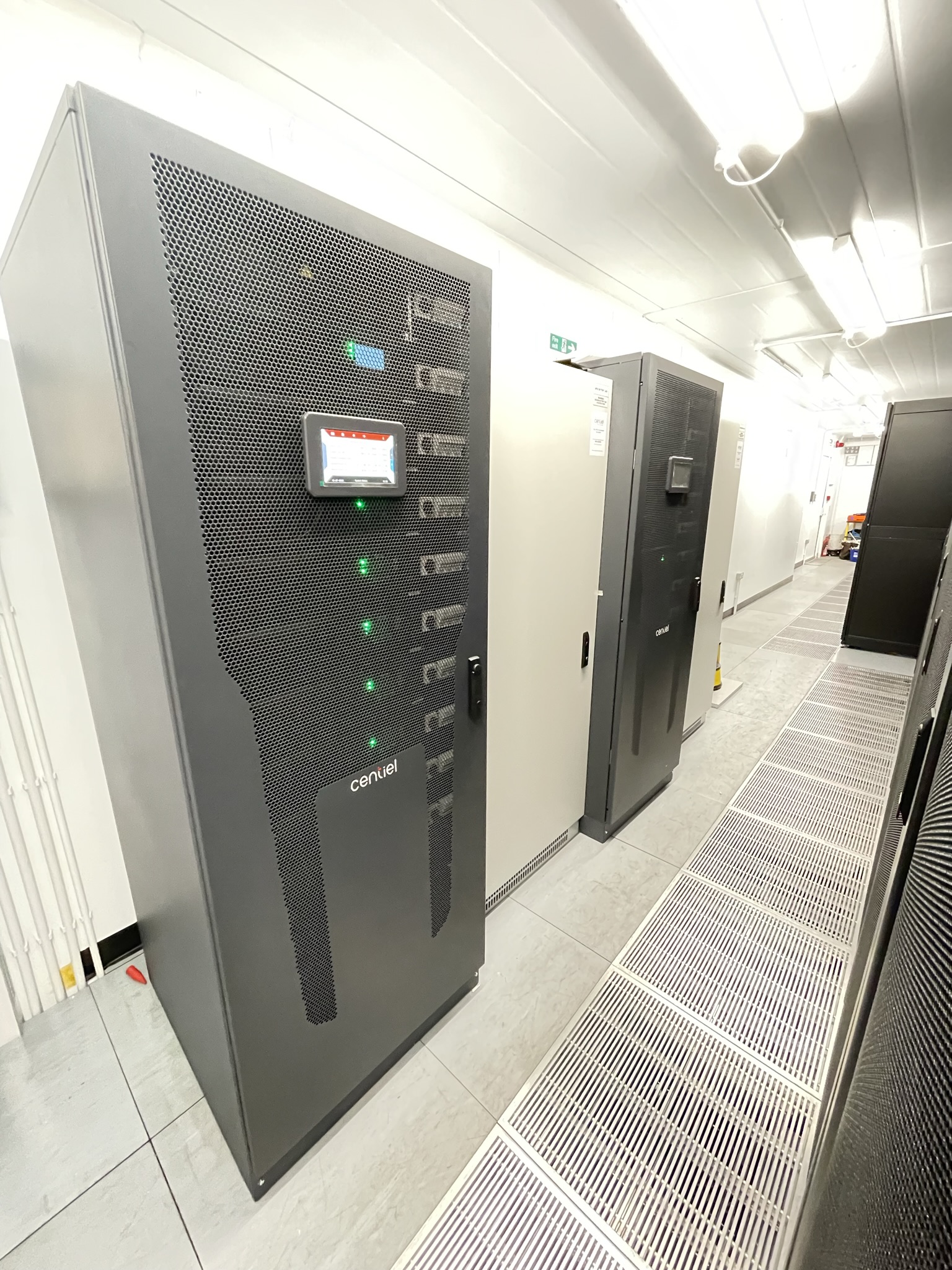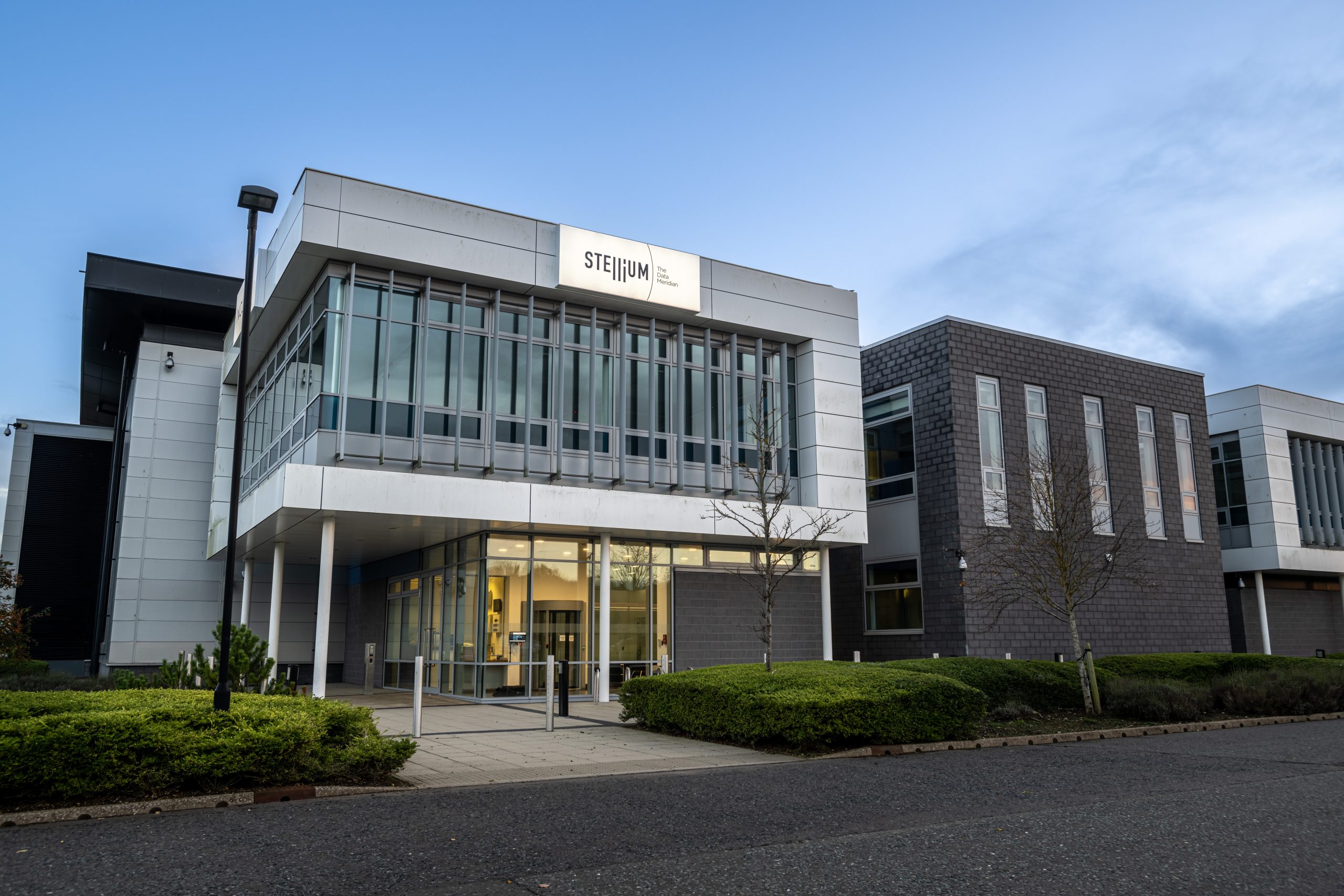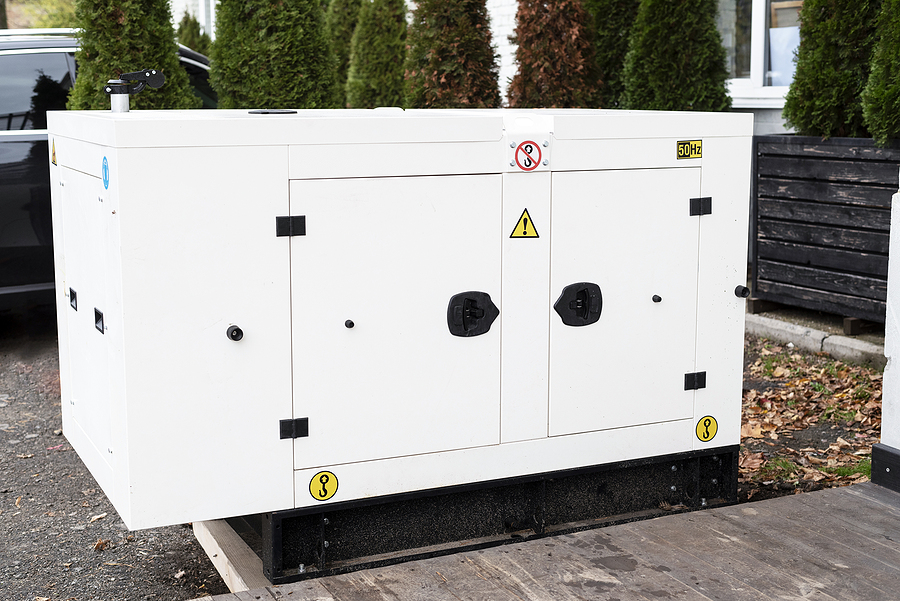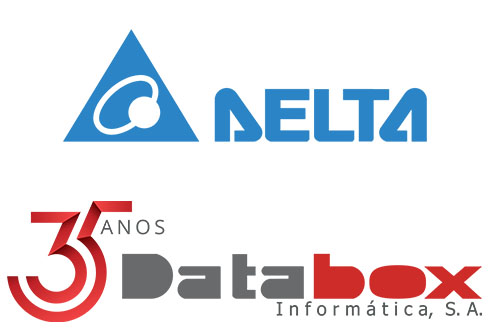UPS & Power Distribution
Data Centres
News
UPS & Power Distribution
Vertiv launches UPS for edge and mid-sized applications in EMEA
Vertiv has introduced the Vertiv Liebert APM2, a new energy efficient and scalable power solution to its uninterruptible power supply (UPS) systems portfolio.
The Liebert APM2 is compatible with lithium-ion (Li-ion) and VRLA batteries, and features a compact design that can scale from 30kW to 600kW in a single unit. It offers significant energy savings as compared to less efficient alternatives, and can also parallel with up to four matching units for additional capacity or redundancy. It is a CE certified UPS system available in 400V in Europe, the Middle East, Africa, Latin America, and Asia.
To satisfy the increasing power needs of edge computing applications, as well as the constrained space typical of these sites, it delivers a greater power output in a smaller footprint than similar capacity solutions, with the models requiring up to 45% less space than the predecessor UPS, Vertiv Liebert APM.
The Liebert APM2 operates with high energy efficiency in all modes, up to 97.5% in double-conversion mode; up to 98.8% efficiency when operating in dynamic online mode, which draws power through the bypass line and uses the inverter for balanced output and as an active filter; and up to 99% when operating in ECO mode, which takes advantage of stable grid input conditions to leverage the bypass line. All modes are automated based on user preferences.
The intelligent paralleling feature facilitates load sharing among multiple power modules, even across multiple units. This enables balanced unit runtime and offers automatic failover for enhanced system availability. Intelligent paralleling has also been shown to contribute to energy efficiency.
“Vertiv has introduced, in Liebert APM2 and other UPS systems, enhancements that improve operational efficiency and can contribute to a reduced data centre PUE, while also maintaining system availability,” says Giovanni Zanei, Senior Director, AC Power Global Offering and EMEA Business Leader at Vertiv. “In particular, the dynamic online feature, built on a robust global platform launched in 2018, enhances the already impressive UPS efficiency and has been adopted by energy and availability conscious customers, including many colocators.”
Isha Jain - 3 October 2023
Data Centres
News
UPS & Power Distribution
Centiel supports Sure’s data centres on net zero path
Centiel has completed a project to deploy its award-winning 4th generation, three-phase, modular UPS system CumulusPower in three of Sure’s Tier III data centres on Guernsey.
Sure’s data centres on the Channel Islands keep some of Europe’s largest organisations’ critical data safe and secure in a location outside of mainland UK and Europe.
The upgrade to legacy equipment in data halls four, five and eight this year to CumulusPower has seen the whole facility convert to the latest technology, which offers significantly higher resilience and availability (nine-nines 99.9999999% which equates to milliseconds per year) than previously, in addition to achieving significant energy savings, costs and reducing carbon footprint. Due to the true modular nature of CumulusPower, it is highly efficient, meaning it runs at 97% efficiency compared with <80% for the previous UPS.
Simon Roger, Facilities Manager, Sure, comments, “We chose Centiel’s CumulusPower as the leading power protection technology on the market.
“I am pleased to say that the UPS replacements in data centres four and five are now complete with no more switching events required and the change requests are both closed. We have seen the predicted instant power savings equating to an estimated 20-30% approximately with the current IT load. The UPS are also uber reliable and take up less space and we have saved around seven racks on this installation which can be used for clients.”
Due to the location of the Channel Islands, trained engineers usually need to fly to the islands to complete necessary maintenance work. CumulusPower’s modules can be ‘hot/safe swapped’ in a running load, therefore, Centiel has also trained Sure’s engineers in first level response. Sure’s team can now complete basic monitoring, diagnostics and maintenance of the UPS.
Simon continues, “CumulusPower is unique in the market because it enables UPS modules to be swapped safely by our trained team without switching the UPS off. This safe-hot-swap functionality means even if we need to replace a module and send it for repair, we do not experience any downtime, ensuring maximum availability for our clients.”
Isha Jain - 3 October 2023
Data Centres
IT
News
UPS & Power Distribution
Centiel: Protecting power for hypercritical systems
By David Bond, Chairman, Centiel UK
Products are cheap for a reason. If you jumped out of an aircraft, would you want to be wearing a cheap parachute? Probably not!
The same logic applies to an uninterruptible power supply (UPS) protecting hypercritical systems. Selecting the solution which offers the highest level of availability and a low Total Cost of Ownership (TCO) is very important. However, finding the best way to protect critical power is a complex topic and one size doesn’t fit all. For this reason, Centiel’s expert team act as trusted advisors to data centres and facilities across the UK to ensure they always have the optimal UPS solution to reduce their TCO and maximise their uptime, whatever their requirement.
Centiel’s sales team are all engineers and UPS solutions experts and are not required to “sell” UPS. They are required to establish long term relationships with clients and consultants by offering their wealth of experience and expertise. They must take time to understand the challenges faced by the client and always provide the best advice in relation to solutions. If, for example, the best solution is “don’t change the current UPS”, then this is the advice given. Centiel wants its customers to be able to pick up the phone and discuss the best options available for them now and in the future, knowing they will always receive excellent advice and recommendations based on best practice.
It's this long-term vision and close relationships with Centiel’s clients which led to the development of their industry leading UPS solutions. For example, Centiel recently launched StratusPower, which shares all the benefits of the award-winning three phase, true modular UPS CumulusPower - including “9 nines” (99.9999999%) availability to effectively eliminate system downtime; class leading 97.6% on-line efficiency to minimise running costs; true “hot swap” modules to eliminate human error in operation – but now also includes long-life components to improve sustainability.
Centiel’s team have long been at the forefront of solving technology challenges. To develop the innovation that is StratusPower, Centiel listened to customers and understood their concerns about sustainability. For the past four years, its design team has been working to ensure their latest UPS is as sustainable as possible. Uniquely, StratusPower has a 30-year design life and is almost 100% recyclable, providing complete peace of mind in relation to power availability, while helping data centres to achieve net zero targets.
“StratusPower minimises TCO because of its class leading efficiency and low maintenance costs, it is fully scalable, so is unlikely be outgrown and it provides industry leading power availability. This is just one reason Centiel’s experienced team can now advise on the most appropriate options for organisations looking to improve their approach to sustainability and reduce their carbon footprint, as well as maintaining the highest level of availability for critical power protection."
To arrange a discussion about the best UPS to protect your organisation’s critical power or for more information visit Centiel's website.
Click here for more latest news.
Isha Jain - 13 September 2023
Product
UPS & Power Distribution
Vertiv enhances its three-phase UPS channel offering in EMEA
Vertiv, a global provider of critical digital infrastructure and continuity solutions, has announced key enhancements to its dedicated offering for channel distributors and resellers. According to Omdia, Vertiv is already ranked at first place in the three-phase UPS market globally, capturing 16% of the market. With these enhancements, its highly efficient and market-leading three-phase uninterruptible power supplies (UPS) from 10 to 60kVA, including the Vertiv Liebert ITA2 and its complementary services, are now available in the Vertiv Solution Designer tool and shipping from stock in Europe, Middle East and Africa (EMEA).
According to Omdia’s UPS Hardware Market Tracker and Analysis 2022, there is an increased demand for three-phase UPS in EMEA from markets outside of cloud, colocation, and telco. These include retail, wholesale, healthcare, manufacturing and other industries. By 2026, the three-phase UPS market in EMEA is expected to grow from $1.66 billion in 2021 to $2.07 billion, a CAGR of 5.84%.
“Digitalisation is being leveraged by companies of all sizes and industries, which leads to an increased need for efficient solutions to protect small and medium sites against power outages,” says Karsten Winther, EMEA President at Vertiv. “The strategic addition of three-phase UPS to our IT channel portfolio allows partners to serve a broader market with industry leading solutions, enabling businesses to leverage the latest technologies and accelerate their digital transformation journey.”
“As an official Vertiv partner and system integrator for over 30 years, we are seeing more and more opportunities for three-phase UPS systems,” says Ronald Lagerberg, Team Leader Energy Solutions at Endenburg Elektrotechniek. “The extension of Vertiv’s IT channel portfolio expands our options, enabling us to gain substantial logistical, administrative, and financial advantages while enhancing our ability to serve end-users. We look forward to integrating these cutting edge products into our offerings."
The Vertiv Liebert ITA2 features a true online double conversion technology, a unity power factor and an extremely compact rack/tower design. Compared to single-phase systems, three-phase UPS allow higher power capacity and up to 99% efficiency in ECO mode. With the offering, expert support on product selection, set-up and performance optimisation throughout three-phase systems’ entire lifecycle is now available also through the channel market. In fact, the three-phase UPS offering is enhanced with customised on-site and contract services specifically designed for the channel, while also leveraging the company’s top tier service network.
Having a large portfolio of UPS solutions dedicated to the channel market means that partners have access to a wide range of power protection options, including medium power solutions that allow businesses to expand their digital footprint while still working with their trusted channel partner. Vertiv provides a comprehensive range of specialised services designed to complement channel partners’ business models. The extensive service expertise offers a smooth experience for all parties involved, providing seamless support across their entire service offering, including on-site services, lifecycle services and digital services such as remote diagnostics and incident management. Moreover, partners can leverage Vertiv software solutions to empower asset management capabilities and offer the best experience to their end users.
In addition to UPS systems, the company’s broader critical infrastructure portfolio is designed to operate more efficiently, increase capacity and potentially lower TCO while integrating seamlessly with the customer’s existing infrastructure, enabling partners to expand revenue streams and increase margins. With manufacturing facilities across Europe and the world, Vertiv solutions can be made available when and where they are needed.
Partners can also access dedicated configuration tools linked with an ecosystem of technical and commercial support teams. Vertiv’s multi-award winning Partner Program features benefits and incentives to equip, develop and reward partner engagement. The addition of the Liebert ITA2 UPS to its IT channel portfolio also enables EMEA resellers in participating countries to earn more points through the Vertiv Incentive Programme (VIP), which allows partners to easily earn rewards without the need for any reporting. Bonus points are uploaded into the Vertiv Partner Portal monthly, and the partner only needs to log in to redeem them.
Isha Jain - 6 June 2023
Data Centres
UPS & Power Distribution
Stellium Datacentres selects Schneider Electric’s Galaxy VM UPS
Stellium Datacentres has partnered with Schneider Electric to help drive data centre resilience and efficiency. Stellium selected Schneider Electric’s Galaxy VM UPS with lithium-ion (li-ion) batteries to provide energy efficient, resilient, and sustainable power protection at its data centre in Newcastle.
Stellium’s location in Newcastle has emerged as a major UK connectivity hub, and the meeting place for high frequency data-transfer across local, national and international borders. CBRE, for example, recently cited its 80MW (scalable to 180MW) colocation facility, as the largest in the north of England region - offering hyperscalers and enterprises a viable, alternative wholesale location compared to operators in London and the south of England.
Powered by REGO certified 100% renewable energy, Stellium provides Tier 3+ mission-critical infrastructure and diverse connectivity services for a multitude of businesses including fintech and high frequency trading, energy, healthcare and pharmaceutical research and public sector. The company also positions itself as the new Data Meridian - where east meets west in data transfer - being the UK’s only data centre landing station for the Altibox/NO-UK Nordic subsea cables and Aqua Comms North Sea Connect cable, as well as the home of the UK’s newest Internet Exchange Point NCL-IX.
An international gateway
One of Stellium’s clients is Aqua Comms, a provider of international undersea fibre connectivity, which provides major connectivity linking the USA with Ireland, the UK and the Nordics. The America Europe Connect 2 (AEC-2) project is a dual diverse trans-Atlantic fibre connection comprising two legs, one directly from the US to Denmark and the other passing through Ireland, the Isle of Man and England, where it terminates at the Stellium Campus before continuing to Denmark.
The overriding requirement for Aqua Comms’ landing station is guaranteed, 100% uptime, reinforced by a stringent service level agreement (SLA). Several factors make the Stellium Campus a good fit, including ample utility power via the UK’s Super Grid, which provides dual 11kVA feeds into the site, as well as backup power systems that offer defence in depth.
Its features include 2N levels of redundancy offered by Schneider Electric’s Galaxy VM UPS and 6MVA standby generators arranged in an N+1 configuration. Stellium selected Schneider Electric’s Galaxy VM UPS due to its high levels of reliability, strong technical and energy efficiency capabilities, and because the company’s sustainable approach to its product strategy matched Stellium’s approach to life cycle management.
Galaxy VM UPS
Designed to provide highly efficient data centre power continuity, Schneider Electric’s Galaxy VM is a scalable, three-phase UPS for data centres and industrial environments. Powered by lithium-ion batteries, Galaxy UPS delivers the highest levels of backup power protection in a smaller footprint, offering advantageous space saving capabilities for colocation businesses.
Furthermore, Galaxy VM utilises Schneider Electric’s patented eConversion mode as standard, offering up-to 99% energy efficiency alongside Class-1 (UL certified) power protection level for critical loads, without compromising availability.
“Today, businesses have come to the realisation that through high quality fibre connections and access to 100% sustainable power, it is possible to have major data centres built to Tier 3 standards, in almost any location,” says Paul Mellon, Operations Director, Stellium Datacentres. “By partnering with Schneider Electric and using its UPSs to build the highest levels of redundancy and resiliency into our Newcastle data centre, we’re safeguarding the provision of our customers critical equipment, and ensuring their applications are powered both efficiently and sustainably.”
“Stellium Datacentres truly defines what it means to be a northern powerhouse and has built a campus primed to create hyperscale levels of growth in the north of England,” says Marc Garner, SVP, Secure Power Division, Schneider Electric, Europe. “We’re delighted that Stellium has selected our Galaxy VM technology to power its mission-critical workloads, and help it deliver industry-leading levels of resilience and efficiency.”
Beatrice - 9 March 2023
Infrastructure
News
Product
UPS & Power Distribution
Vertiv introduces UPS for distributed IT networks and edge applications
Vertiv has introduced the Vertiv Liebert GXE, an online double-conversion single-phase UPS, available in 6kVA and 10kVA power ratings in either a tower or rackmount configuration. The system is designed to provide reliable power to distributed IT networks and edge computing applications in various industry segments such as enterprise, government, manufacturing, finance, education and retail. The product is globally available for countries and organisations using 230V solutions, and is now shipping from stock in Europe, the Middle East, and Africa (EMEA).
The Liebert GXE performs with high efficiency up to 94% in online mode, and up to 98% in ECO mode, driving energy and operational costs savings compared to other models available on the market. The high output power factor of 1.0 enables continuous and reliable power to more connected devices, protecting them against many disturbances in the AC mains with the online double conversion technology and the input surge protection. The flexible rackmount or tower form factor, with rackmount kits included as a standard, facilitates stock management for distribution in the IT channel, and simplifies installation to accommodate various micro data centre and edge computing needs.
The unit’s runtime can be extended with up to four external battery cabinets (EBC) for longer back-up protection, and the hot-swappable VRLA batteries can be easily replaced by users without the assistance of skilled personnel and without shutdown of the loads for smoother operations and minimised maintenance costs. Additionally, the Liebert GXE has an integrated 4A charger providing quick battery recharge up to 90% in just three hours - which can be critical in case of frequent mains failures - and an integrated battery management system to optimise battery life and recycling.
The Vertiv Liebert GXE includes a user-friendly LCD colour display that makes it easy and intuitive to use. The unit offers remote monitoring capabilities for quick and easy access to IT infrastructure, through the optional Vertiv Liebert Intellislot Unity Communications card and a free download of Vertiv Power Insight software. Moreover, customers can also rely on Vertiv LIFE Services to support remote maintenance and servicing of the UPS for maximum availability.
“IT channel distributors and resellers are constantly looking for efficient and cost effective solutions to protect small and micro IT sites against power outages,” says Andrea Ferro, Vice President channel, IT and edge applications for Vertiv in EMEA. “This latest addition to our IT channel portfolio provides all the key features and performance capabilities needed in an online double conversion UPS for an affordable price, which allows small and medium businesses of all industries to leverage the latest technologies and accelerate their digital transformation journey.”
As part of Vertiv’s IT channel portfolio, the Liebert GXE enables EMEA resellers in participating countries to earn points through the Vertiv Incentive Programme (VIP), which allows partners to easily win rewards without the need for any reporting. Bonus points are uploaded into the Vertiv Partner Portal monthly, and the partner only needs to log in to redeem them.
Beatrice - 21 February 2023
UPS & Power Distribution
Don’t put all your eggs in one basket
By Aaron Oddy, Sales Engineer at Centiel UK
In a Tier III data centre, the UPS systems must be concurrently maintainable without any disruption to the critical load. To achieve this, a separate UPS-backed A and B stream is necessary. If, for whatever reason, either A or B stream becomes unavailable, the unaffected power path will have the capacity and infrastructure to support the total load. It’s a UPS configuration designed to maximise availability and uptime to the critical load.
As a Swiss manufacturer, Centiel is regularly involved in supplying UPS systems to suit this configuration within data centres. However, for the client, it may not always be as simple as supplying a ‘like for like’ replacement or replicating a design from a previous facility. There are lots of variables that can dictate the choice of product or manufacturer, so discussing what options are available will help in making the right informed choice.
Take, for example, that you have a Tier III data centre with an A and B stream. You may be running some legacy end-of-life UPS equipment on stream A and relatively new equipment on stream B. So, do you replace the equipment on both A and B streams to keep the equipment and manufacturer consistent, or do you just replace the legacy equipment? Which route offers more cost savings and alternative options?
There are pros and cons to both. You may choose to stick with a manufacturer based on previous experience, to replace all your equipment. While this may provide some considerable comfort, you may question whether this is the best value in both CapEx and OpEx for the business. You may also be considering the accessibility of this equipment or support should it no longer be available in the future. Where does that leave you as an operating facility? Using a second manufacturer on the same site could solve the issue of putting all your eggs in one basket.
Using two different UPS manufacturers in this way could be seen as an additional layer of resilience to the facility by mitigating risk in the supply chain and services. Replacing just the legacy equipment will help to lower the Total Cost of Ownership (TCO) by reducing the cost of new hardware and reducing the running cost with higher efficiencies. In this scenario, you could say that you are making good use of your existing equipment working alongside the new equipment with a robust supply and support structure.
There are no issues with running completely different UPS systems on true alternative A and B streams. They don’t need to be compatible as they operate on independent power paths. Centiel is starting to see some of the most forward-thinking data centres that require the highest levels of availability adopting this strategy because it increases the resilience, not only to the equipment that supports them but the companies they work with too.
A further advantage of adopting this method is the ability to compare two alternative UPS systems in a live scenario. This could be a beneficial exercise to evaluate the performance of two different UPS systems from two different manufacturers. Particularly when it comes to their energy efficiency, performance, ease of installation, technical support and maintenance, even down to small details like the amount of noise they make or even how they physically look. It can provide valuable insight and help with informed decision-making for future UPS system lifecycle replacements.
Working with alternative manufacturers may only be the right choice for some data centres and primarily when reviewing the replacement of legacy equipment. For new data centre builds, for example, the decision to stay with a single manufacturer maybe more advantageous, for example, the commonality of equipment for users, the flexibility of equipment to be redeployed, the warranty period, and possibly a more cost-effective maintenance plan with the same provider. However, for certain scenarios with their existing infrastructure, it may be a possible solution! Centiel’s role as trusted advisors is always to give the best recommendations to its clients.
At Centiel, the company’s experienced team is always available to discuss and help evaluate the best approach to UPS design, installation and management to suit any facility’s critical power protection needs. Centiel’s leading-edge technology, backed-up with its comprehensive maintenance contracts carried out by experienced engineering teams ensure its clients’ power has the very best protection at all times over the long-term.
Carly Weller - 11 January 2023
UPS & Power Distribution
Mitigating risk to UPS installation
Uninterruptible Power Supplies (UPS) are designed to protect critical loads and to mitigate risk to critical infrastructures, including data centres. However, care needs to be taken as risk to the load can be re-introduced through the UPS itself, writes Tim Ng, Sales Engineer at Centiel UK.
The three
biggest risks are: purchasing a lesser quality UPS system without realising the
implications of doing so, the use of unapproved maintenance procedures and not replacing
aging equipment at the appropriate time. As a result, failure can have far
reaching consequences for the operation in terms of damaged reputation and lost
business due to unexpected downtime.
Replacement before failure
Most (sensible!)
people replace their cars before they get to the point where they keep breaking
down. It’s the same with a UPS. Inevitably as equipment ages, components become
less reliable and available, and the risk of failure is increased. However, we regularly
come across UPS systems that have significantly exceeded their recommended design
life and should have been replaced years ago. To be blunt, by continuing to run
and maintain an aging UPS you are putting your trust in a system with a much higher
probability of failure.
Sometimes it’s
down to a lack of technical guidance about when to make the decision to replace
the UPS, but more often than not, it’s down to securing budget. However, in the
event of a major outage and a situation where an ageing UPS fails, a business
could lose millions for the sake of a small investment in new equipment. There
are also significant gains to be made. For example, modern UPS systems are far more
efficient and can slash operational expenditure dramatically.
Picture a data centre with 1MW of critical load supported by a UPS system with an efficiency of 90%. Based on an average unit price of 14p/kWh the running cost of this UPS will be around £135,000 per year. Now picture a new UPS supporting the same load at the same p/kWh but with an efficiency of 97% - the running costs are reduced dramatically to around £38,000 per year. If you consider that the average commercial electricity p/kWh is projected to increase by as much as 40% in 2022, this makes a very strong case to replace ageing inefficient equipment. A new UPS could pay for itself in just a few years.
Quality counts
When selecting
a UPS, it is important to make the right choice. If a quote appears to be too
good to be true, maybe it is! Quality equipment and components can cost more
but there is a reason for this. Manufacturers invest heavily into research and
development to ensure that the components selected for use in their products meet
a strict set of performance standards. This means that they can deliver the
most robust and reliable systems to their clients. Ultimately, the aim of any quality
UPS manufacturer is to produce a system that has the highest availability, with
reduced running costs and minimised risk of system downtime.
Maintenance
matters
As with any
new car, using an unapproved technician to service your UPS will likely invalidate
the warranty. A new UPS should always be maintained by an approved factory
trained engineer or manufacturer recommended maintenance technician.
A UPS requires
regular preventative maintenance. An essential part of this is for the correct
software updates to be deployed, which ensures optimal functionality.
Sometimes unapproved
engineers will take on a maintenance contract that they are unable to fully
support. As well as invalidating warranties, essential software updates will be
missed, which can impact the UPS’s functionality. The consequence of using
unapproved engineers can be serious. For example, putting a UPS into bypass for
maintenance using an incorrect switching sequence can introduce a fault into
the system, causing catastrophic failure.
Correct preventative
maintenance will also enable ageing components to be identified and replaced early.
Environmental factors, such as temperature and dust, can also invalidate warranties
and reduce the life span of the UPS. Trained maintenance engineers will monitor
these issues and take corrective action where necessary.
A further benefit
of using approved factory trained engineers is that they can become a trusted
advisor. At Centiel, the company’s engineers work closely with clients to advise
what actions are required, following preventative maintenance to maximise the performance
of their systems.
A UPS will
protect the critical load to a datacentre for many years. However, to mitigate the
risk of the failure of the UPS itself, select a quality solution, ensure it is
maintained correctly and replace the equipment before it reaches the end of its
design life.
Carly Weller - 21 January 2022
Data Centres
Infrastructure
News
UPS & Power Distribution
Delta's UPS and data centre solutions to expand in Portugal
Delta has announced a new partnership with DATABOX - Informática to provide Delta’s wide range of energy-efficient Uninterruptible Power Supplies (UPS) and Data Centre Infrastructure Solutions to IT resellers and system integrators throughout Portugal. By leveraging their close collaboration as well as Delta’s core competencies in energy-efficient ICT infrastructure and DATABOX – Informática’s deep expertise in the local market, this partnership is expected to meet the demanding requirements for edge computing in Portugal.
Commenting on the partnership with Delta, João Pedro Reis, CEO of DATABOX - Informática states: “Delta’s smart energy efficient solutions are world-renowned for their energy savings and reliability which, combined with the company’s commitment to sustainability, means that we are proud to partner with such an established and recognised brand that complements our values, products and services. By working closely with Delta, we will be able to help our IT resellers and system integrators to deliver highly reliable UPS and data centre solutions to their customers.”
Jaime Palma, channel manager of Mission Critical Infrastructure Solutions (MCIS) in Portugal for the Delta Electronics EMEA region, adds: “DATABOX – Informática is a well-established national IT distributor which has an excellent reputation and long-lasting relationships with its suppliers and customers. Its superior local stockholding, sales force and customer capabilities, combined with Delta’s highly quality products, can offer IT resellers and system integrators the ideal solution for their needs. Delta looks forward to expanding the relationship into other Delta portfolio solutions to help Portuguese corporations enhance their competitive edge through higher energy efficiency and higher productivity.”
The award-winning UPSs designed by Delta act as advanced power managers, ensuring the availability of an uninterrupted power supply to protect hardware and mission critical applications. High-quality UPSs function as an essential safeguard against many potential energy issues, including voltage surges and spikes, voltage sags, total power failure, and frequency differences. With the rise of edge computing, Delta also offers its InfraSuite Datacentre Infrastructure Solutions to support its customers in building an optimal data centre with fully-integrated infrastructure solutions.
Beatrice - 14 January 2022
UPS & Power Distribution
Six benefits of lithium-ion technology for UPS systems
While known for powering laptops and mobile phones, lithium-ion batteries are now changing the field of Uninterruptible Power Supply (UPS) systems for the better, says Nils Horstbrink, Director Offer Management Power at Vertiv.
This rechargeable battery addresses the drawbacks of the
traditional Valve-Regulated Lead Acid (VRLA) batteries commonly used for UPS
systems. While VRLAs are less expensive, these heavier batteries are larger,
and need more frequent replacement.
Let’s take a close look at the practical benefits of
using lithium-ion batteries for UPS.
More compact and lightweight
Lithium-ion batteries weigh 40% to 60% lighter and have a
40% smaller footprint than their VRLA counterparts. This translates into a
remarkable power density level, where less space is needed to deliver the same
amount of power.
Lasts longer
Lithium-ion batteries have a significantly longer lifespan - around twice or thrice that of VRLA batteries on average. Compared to a traditional VRLA battery technology that typically lasts three to five years, lithium-ion technology can provide a battery service life of eight to 10 years (or longer), often outlasting the UPS itself. This essentially makes the UPS almost maintenance-free, with fewer or possibly no battery replacements throughout its lifespan. Unlike VRLA batteries, lithium-ion batteries offer a high life cycle, making it suitable for many applications where frequent charge and discharge cycles are expected.
Contributes to a lower total cost of ownership
Regarding the total cost of ownership (TCO), lithium-ion
batteries can provide up to 50% savings over their life expectancy. This is
primarily due to their longer lifespan, high-temperature resilience, reduced
maintenance expenses (with fewer or no battery replacement), and reduced
installation expenses. Although VRLA batteries can surely save you money upfront,
think of the bigger picture and consider the TCO.
Faster to recharge
UPS batteries need to be recharged as quickly as possible to
full capacity. While VRLA batteries can take over six hours to charge from 0%
to 90% of full runtime capacity, lithium-ion batteries take only around two
hours to recharge. That reduces the overall risk of experiencing an outage
before your UPS batteries have been fully charged.
The cutting-edge lithium-ion battery technology has gone a
long way to the advantage of many industries. With the many benefits it offers,
a lithium-ion powered UPS is a must-have to secure your critical operations and
lessen your operational costs.
Resilient to higher temperatures
Lithium-ion batteries can operate normally at temperatures
of up to 40oC without compromising performance. This is a clear
advantage of this battery technology over VRLA batteries, which shed off about
half their lifespan for every 10oC temperature rise over 25oC.
Since lithium-ion batteries have a wide operating
temperature range, they become convenient for more extreme, non-traditional
settings and facilities that don’t have enough cooling capabilities.
Comes with advanced integrated battery management system
Lithium-ion batteries come with an advanced integrated
battery management system (BMS). This provides an accurate picture of the
battery's health and runtime and protects the battery cells against current,
temperature, and over- or under-charging. The BMS continuously adjusts battery
charging to make the most out of performance and battery life.
Beatrice - 4 January 2022

Head office & Accounts:
Suite 14, 6-8 Revenge Road, Lordswood
Kent ME5 8UD
T: +44 (0)1634 673163
F: +44 (0)1634 673173
